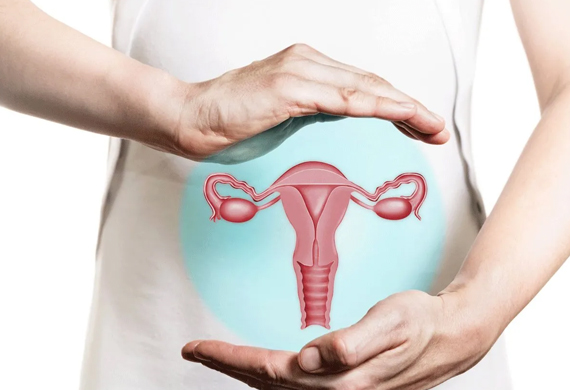
Study Finds Higher Prevalence of High Risk HPV in Younger Women
By: WE Staff
Women's health has been an important cause across the globe. Lately, cervical cancer has emerged as an alarmingly common affliction among women. The prevalence of cervical cancer refers to the number of cases that the disease has at any given period in a particular population. Due to various major factors like healthcare access, screening programs, vaccination rates, and general awareness, the prevalence can differ between various nations, regions, geographical areas, and populations.
The World Health Organization (WHO) states that cervical cancer is the fourth most common cancer in women worldwide. Around 90 per cent of cases of cervical cancer occur in developing nations, where there is little access to healthcare services like cervical cancer screening and early detection. There are various initiatives and well-established cervical cancer prevention programs, which include routine screening using tools like Pap tests or HPV DNA tests by which the prevalence of this particular disease can be significantly low.
According to research performed by a group of oncologists and specialists from the Department of Preventive Oncology at the Cancer Institute, Adyar (WIA), early screening and the proper approach to medical investigations may reduce complications and eliminate the need for unnecessary investigations for cervical cancer. In South India, a national public health policy supported by the government is highly required to address the scalable technology for the detection of cervical cancer, according to the experts.
Dr. Vijayalakshmi Ramshankar, Department of Preventive Oncology (Research), WIA stated that after researching a group of 10,395 women who were given the Human Papillomavirus (HPV) DNA test, the research report titled "Impact of HPV molecular testing with partial genotyping as a feasibility study in cervical community screening program in South India" was created.
Cervical Cancer Most Likely in Women Between 30-40 Years of Age
According to the study, 5.73 per cent of women had high-risk HPV. A total of 127 women were found to have HPV 16, 36 women had HPV 18, 382 women had the mixed 12 high-risk HPVs, whereas 50 women had multiple mixed infections. High-risk HPV was found to be prevalent in younger women between the ages of 30 and 40, with a second peak appearing in those between the ages of 46 and 50. The researchers determined that there was a statistically significant association between the second peak and higher rates of mixed infections in the age period of 46 to 50 years. The study also discovered that 48 per cent of the multiple mixed high-risk HPV infections occurred in people between the ages of 46 and 50.
Dr. Vijayalakshmi states that in a country like India, the elimination of cervical cancer depends entirely on three major areas that are screening, treatment, and vaccination. The Cobas HPV test provides separate results for HPV 16 and HPV 18, as well as a combined result for additional high-risk genotypes, all obtained from a single patient sample in a single test. Healthcare professionals can efficiently determine a patient's risk level by receiving thorough 3 in 1 results.
According to the study, Cobas HPVs high negative predictive value can increase screening effectiveness by detecting only clinically significant infections associated with high-risk HPV and also prevent them from further intervention in nearly 94 per cent of the women.
HPV vaccines being launched in India:
The Indian Ministry of Health and Family Welfare asked seven state governments, from Tamil Nadu in the far south to Himachal Pradesh in the far north, to start introducing the Human Papillomavirus (HPV) vaccine for girls ages 9 to 14. By the end of this year, a target of 68 million girls in India should be vaccinated against HPV. The routine HPV vaccination will then be offered to 11.2 million girls aged 9 years.
Along with this, the first HPV vaccine for cervical cancer that was manufactured in India was introduced by the Serum Institute of India. This indigenous-produced vaccine, known as CERVAVAC, will be available for purchase by mid of 2023.
Most Viewed
- 1 Women's Health Startup HerMD Closing Doors Amid Industry Challenges
- 2 5 Famous Women in Indian Armed Forces
- 3 Saudi Women No longer Require Male Permission for Clothing Choices, says Prince MbS
- 4 Kolkata Medtech Startup Innovodigm Raises Rs 5.5 Crore Seed Funding Led by IAN Group
- 5 Yamunanagar's Kashish Kalra Honoured after Securing 111th Rank in UPSC Civil Services Exam
- 6 Madurai Appoints Its First Woman Corporation Head
- 7 IAS Vijayalakshmi Bidari Appointed as the new Nagpur Divisional Commissioner
- 8 American Entrepreneur Lucy Guo Overtakes T Swift to become Youngest Female Billionaire
- 9 ICC Women's World Cup 2025 Trophy Showcased at Indore's Holkar Stadium
- 10 Aparna Saxena's Beauty Venture AntiNorm Launches in India
- 11 Vidya Nataraj Co-Founded BlueStone Jewellery & Lifestyle files IPO
- 12 5 Women Freedom Fighters of India
- 13 Dr. G Krishnapriya appointed as CEO for Trichy
- 14 M3M & Sirona Partner to Introduce Menstrual Hygiene Vending Machines in 15 Locations
- 15 Punjab Govt launches SHE Cohort 3.0 Supporting Tech-led Women Startups
- 16 Indian origin Lawyer, Sweena Pannu appointed as the US New Superior Court Judge
- 17 The Aurora Tech Award recognizes 4 Indian Women-led Startups
- 18 Kerala's Republic Day parade featured an all-female tableau
- 19 Manisha Kabbur Becomes Karnataka's First Woman International Karate Coach
- 20 Director K. S. Ravikumar's Daughter Maalica Ravikumar Launches Life Coaching Company 'Evergrowth Academy' for Women
- 21 Leezu's Raises Pre-Seed Funding to Accelerate Growth in Sexual Wellness Industry
- 22 Sattu: Super-easy summer drink for PCOS gut healing
- 23 Swathi Nelabhatla creates Sitha App, India's First Women-Exclusive Gig Platform
- 24 7 Timeless Female Kathak Dancers & their Iconic Legacies
- 25 Meet 7 Iconic Women Architects of Modern India & their Most Impactful Work
- 26 This Woman-led Insuretech Startup is Helping Bridge the Education Financing Gap in India
- 27 Women Leaders Share Lessons Learnt from India Women's WC Win
- 28 5 Enterprising Women Founders Powering Singapore's Tech & Innovation Landscape
- 29 4 Women. 4 Stories. One Vision for Smarter, Stronger Healthcare
- 30 Global Gender Gap Narrows to 68.8%, But Full Equality 123 Years Away: WEF Report 2025
- 31 Changemakers: 7 Women Entrepreneurs Taking the Make in India Movement Forward
- 32 Meet Lucy Guo, The Youngest Self-Made Female Billionaire Disrupting Tech
- 33 How Women are Driving India's Festive Online Shopping Surge






